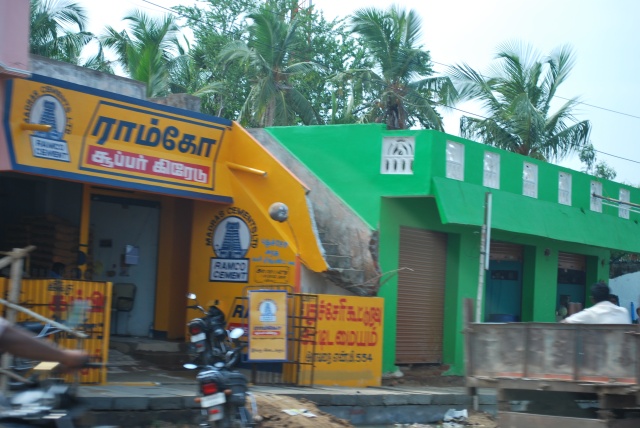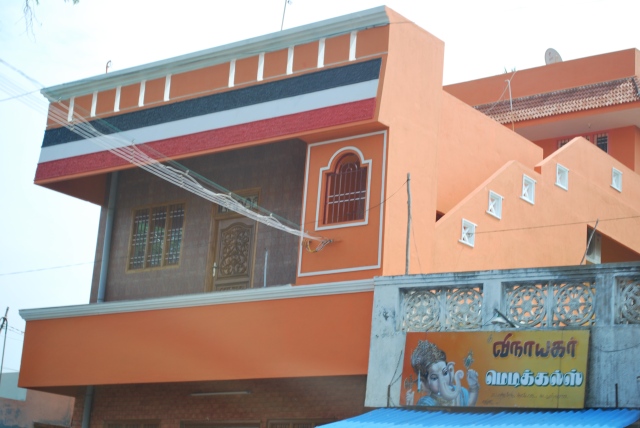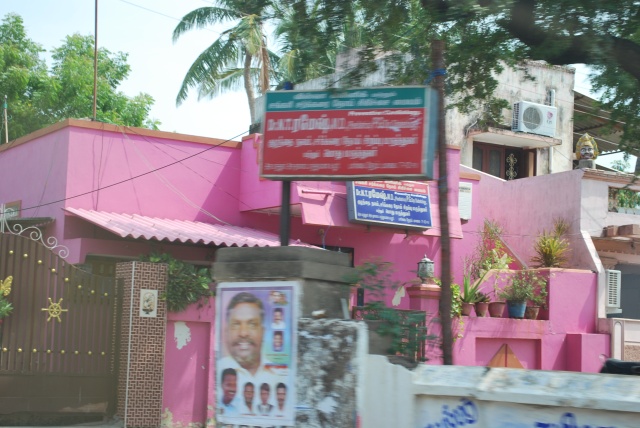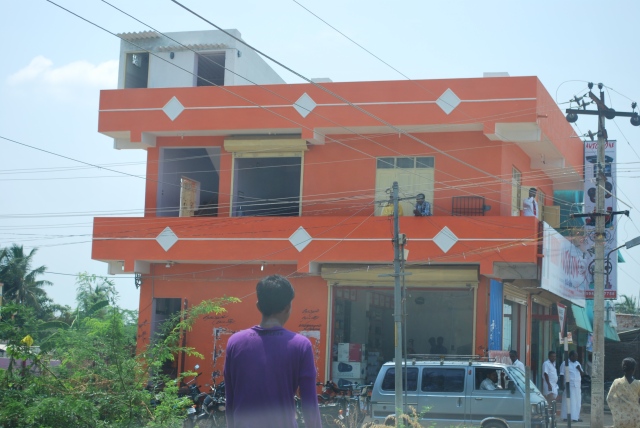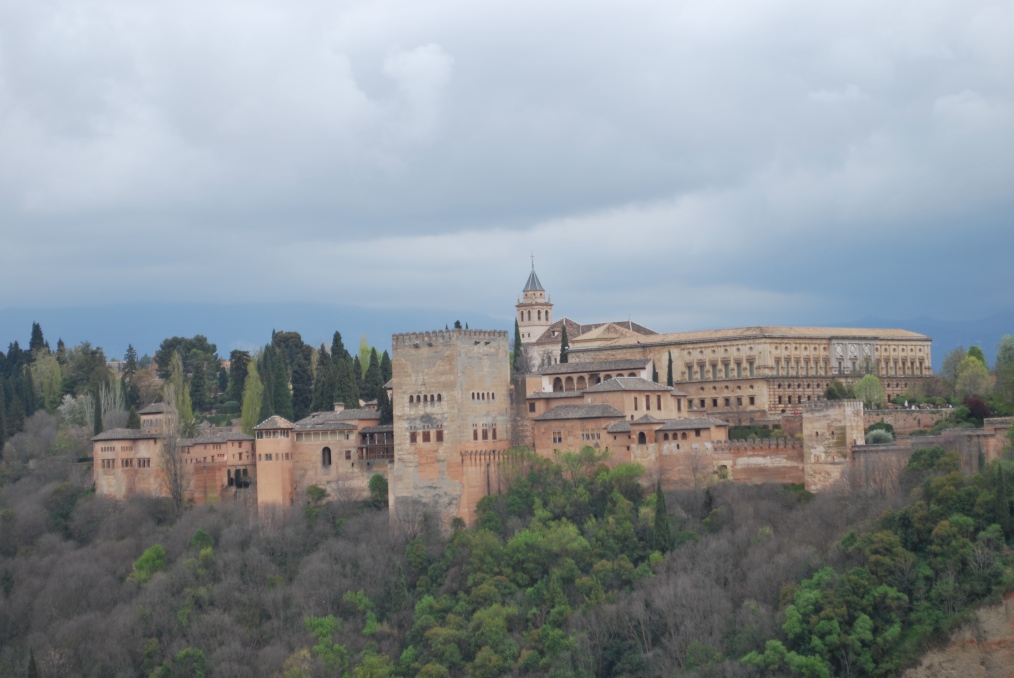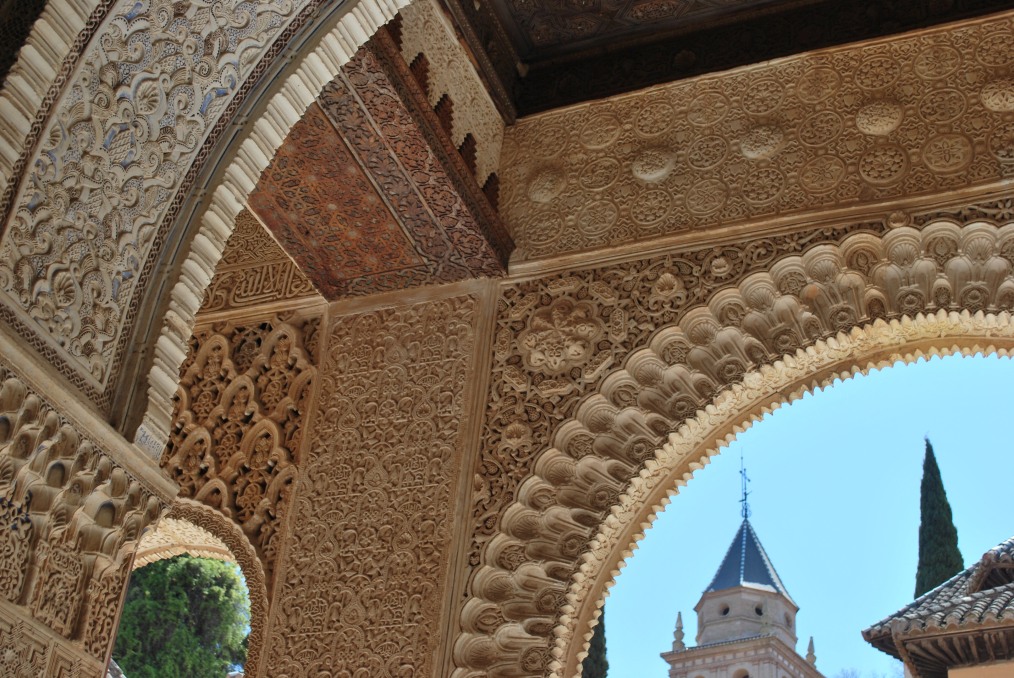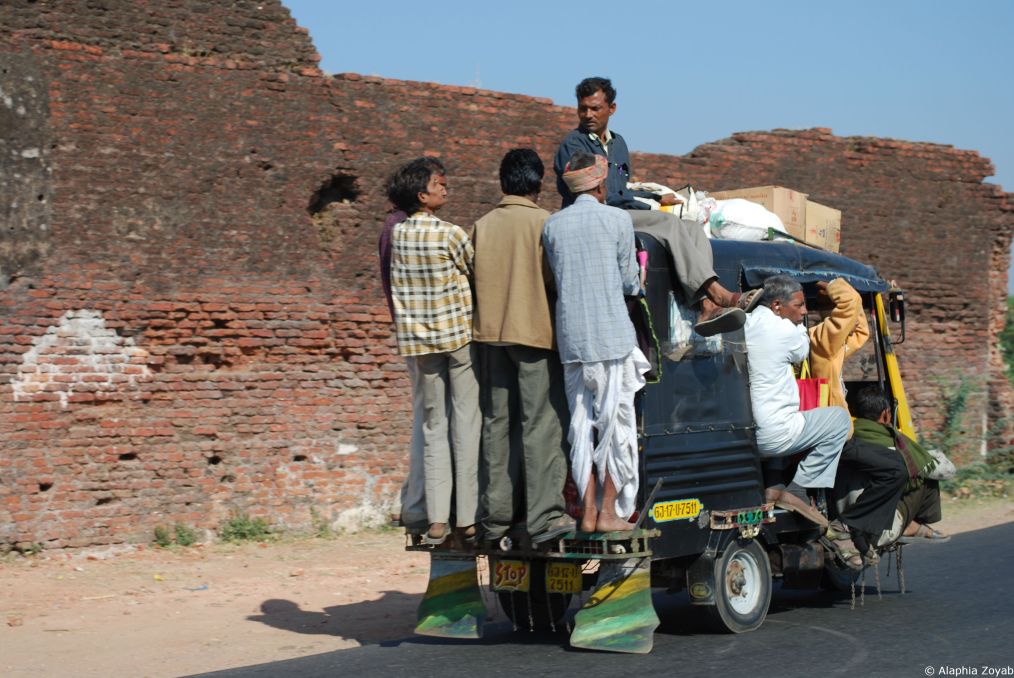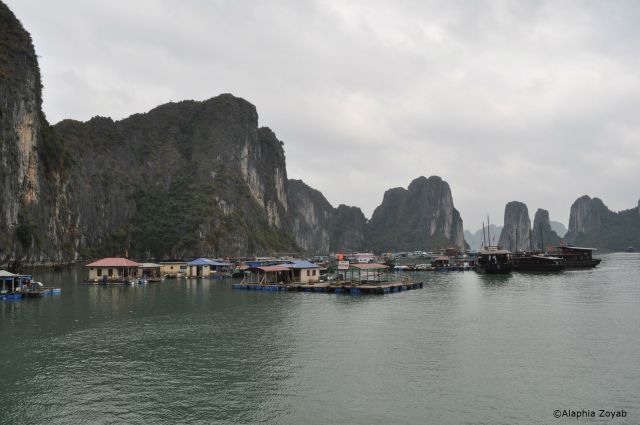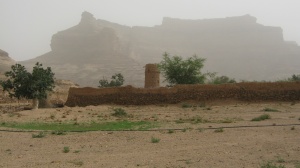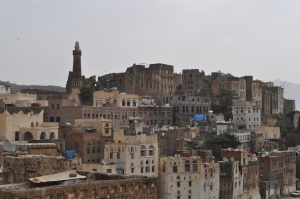Our boat approached the abandoned and lonely shores of the island of Trinket in the
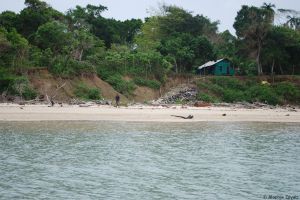
Approaching the shores of Trinket Island where Gopinath Jeem is waiting for us.
Nicobar archipelago in the Andaman Sea. The beach was littered with the grotesque trunks of dead trees where a man now appeared. He was wearing a navy blue T-shirt and grey shorts and walked barefoot with an erect spine. As our boat came nearer to the shore he stood still and stared in our direction.
I waved, wondering if he would be too shy to wave back. But he raised a strong, muscular arm in the air and I felt a renewed thrill in returning to post-tsunami Trinket to meet Gopinath Jeem.
I had first met him in 2006 on the same shores to which he had returned after a long struggle in a tin house that the Indian government had put him in on the neighbouring island of Kamorta. It was his “temporary shelter” till they could build him a new house. But he didn’t want them to and he and another man came back to Trinket to re-settle for good and do it on their own.
Gopinath had survived the 2004 Indian Ocean tsunami after battling a raging sea for almost nine hours to get to Kamorta. For two years after the tsunami he was forced to live there because everything in Trinket had been destroyed. He lost a daughter who he adored, his coconut plantation was gone, there was no trace of his house or his boat and he had no tools to build anything new. In fact, Trinket had borne such a major brunt of the oncoming wall of water that it broke, biscuit-like in three places. The Indian government had forsaken this battered place and built homes for its residents in Kamorta in a new
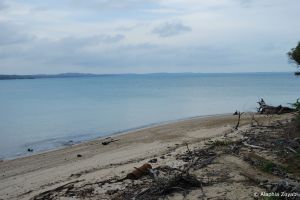
The larger island of Kamorta, seen across the water from the shores of Trinket.
settlement called ‘Vikas Nagar’. Vikas means ‘development’ in Hindi but everyone I had spoken to in Vikas Nagar seemed unhappy with the present and anxious about the future. ‘Development’ hadn’t brought them much satisfaction.
Unlike Gopinath who came back, all the others stayed on in Kamorta, eating the free food the government gave them while waiting for their new houses to get built. For years, there had been no need to do any work until the day the government handed over the houses and stopped the food supply. By then they had become so dependent on hand-outs that many people had simply lost the will to work. Also, the only paid work most people in the Nicobari tribe had done for centuries was making and selling copra. But their coconut plantations were destroyed by the tsunami and the new trees hadn’t started yielding enough fruit yet.
So the Nicobari tribespeople had now become like daily wage labourers, getting employment through the government’s rural employment schemes doing work many of them disliked. Knowing all this, I wanted to find out how the man, who had turned his back on this way of life, was getting on in Trinket.
***
Rasheed, Abdul and I jumped off the boat into the shallow water and went ashore to Trinket. Gopinath greeted me rather matter-of-factly, which made me feel at ease. We went directly up the steps he had created in the earth, leading to the spot where his house stood. Within seconds we were in a clearing with a large square machan, the traditional Nicobari house built on stilts. But this was rather an ad hoc house, because Gopinath didn’t have access to many of the materials needed to build the machan as they used to before the tsunami.
Instead of using dhani patti which once grew in abundance on the shores of the island, he
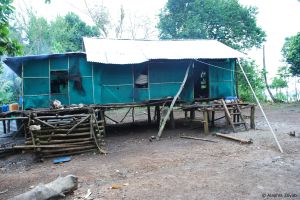
Gopinath’s home that he ingeniously put together with all the material he could find. It was like visiting Robinson Crusoe.
had ripped out the tin sheets of his temporary shelter to make his roof. Instead of flat wooden panels for the walls he had again recycled material given to him by the government. One side of the house had a ‘wall’ made of a bright green mesh.
“The Agriculture Department gave that to me to protect the new plants from the animals,” said Gopinath.
“Where did you get this canvas on the other wall?” I asked.
“That was the tent that the government gave me just after the tsunami,” he said.
In returning to Trinket to live in a house built with his own hands, Gopinath had inadvertently made a powerful political statement. The message to the Indian government was that they didn’t need to teach the Nicobarese how to survive on their own land. The government had spent millions in taxpayer money to build houses for a community of skilled carpenters, who had built their own homes with indigenous material for centuries. The free, new houses that the government had built with exotic material already had all kinds of problems that the Nicobarese didn’t know how to fix.
***
Under the stilts of Gopinath’s house and around the machan a whole menagerie of chickens, pheasants, pigs and goats circled busily, looking for food. We went up the wooden ladder and into the large cool and breezy room. The floor, made with bamboo was like a raft hanging in the air with plenty of gaps in it. A waist-high wooden partition divided the kitchen from the rest of the room where there was a stove connected to a gas cylinder as well as a pit to light a fire. From the inside I realised that the house in fact didn’t have any outer walls. The green mesh and tarpaulin had been thrown over a light wooden frame and all along the wooden beams hung Gopinath’s varied possessions – among them, bundles of
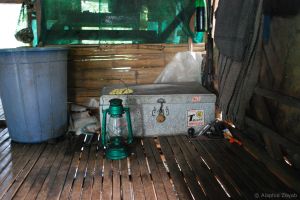
This trunk contains the only possessions that Gopinath thinks are worth keeping under lock and key.
clothes, plastic bags, two saws, a pink Milton water bottle, a Samay wall clock, and even a grey Playboy underwear. The floor was mostly bare except for an Usha sewing machine in one corner and a steel trunk and a large blue plastic bin in another.
Abdul, who acted as unofficial chef had brought some provisions along in an old sack of rice. He deposited the sack’s contents in the kitchen and brought out coffee and Monaco biscuits for us. Gopinath unfurled a plastic mat and we sat down together for a snack.
Years of living alone made Gopinath very comfortable with silence even in company but I was keen to get him to tell me about his life in Trinket. Did he miss the rest of the islanders who now lived in Vikas Nagar? Was it difficult living on an abandoned island with no running water? Did life in Vikas Nagar’s government homes seem more desirable with TVs and electricity?
“I was mentally very disturbed for the first two years after the tsunami,” said Gopinath, beginning slowly.
“I was just waiting for the government to give us tools so that we could build our own

Grotesque tree trunks still line the shores of Trinket Island, which broke biscuit-like in three places with the force of the 2004 earthquake and tsunami.
houses. But the government didn’t give them to us. We should have been allowed to make our own houses.”
“I came back to live here because I found it unbearable in Kamorta. People in Vikas Nagar will face lots of problems in the future – a money crisis, a job crisis. I am satisfied, while they remain unsatisfied,” he said taking a gulp of his coffee.
“I’m also scared that the government will take away my land by force if someone doesn’t live here. There is a lot of confusion between the government and the Nicobari tribe. Actually everything belongs to us but the Indian government is doing as it pleases,” he said.
In the middle of this conversation Gopinath’s white cat appeared and skirted dangerously close to the plate of biscuits.
“Uss…usss,” he said in that way that I had heard all Nicobarese shoo away the animals. The appearance of his cat “Pussy” suddenly made him more animated.
“She is such a moody cat! If I shout at her she runs away in a sulk into the forest and won’t come back until I go to search for her,” he said.
Everyone had finished their coffee so Gopinath stood up and went out of the house. A shy
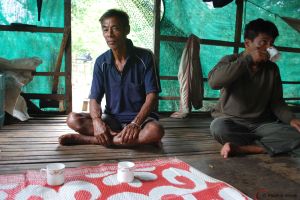
Gopinath doesn’t linger over his food and coffee. He has gulped it out while next to him, Abdul is just beginning his cup.
young man called Patrick now appeared on the scene. Patrick was Elsie’s son and the two of them had built a house behind Gopinath’s shortly after he moved there. Elsie had lost her husband in the tsunami and she had also returned to Trinket to live out the rest of her days. Patrick, who was like Gopinath’s man Friday, had brought a shotgun which he aimed at one of the half dozen chickens running around the house. But they ran in terror, seeming to know he was armed.
Gopinath walked over to the window and Elsie’s hand appeared to drop a fistful of rice into a tin bowl. He flung the grains on the ground and within seconds the birds converged. Patrick stood a few feet away and took aim and after a pause of a few seconds, a shot rang out and a screeching hen lay struggling on the ground. Abdul was called out with a knife and the deed was done.
Elsie plucked the chicken, removed its entrails, chopped it in two equal halves and drove a sharp wooden skewer through the two pieces. Outside Gopinath was getting the fire ready.
He lit a small piece of orange plastic and chopped up a few logs to place them over the burning plastic.
“What was that orange piece?” I asked.
“It was a piece from a boya. Nothing burns as well as a boya,” he said, explaining the collection of buoys lying around on the ground outside his house.
“Where did you get so many?” I asked.
“By the seashore,” he said.
Everything he possessed had a purpose and a lot of it came “from the seashore.”
He brought out the two large chicken skewers and struck them into the ground in front of 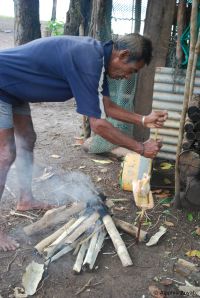 the fire. We were going to eat ‘Kamuas Harok’ or a barbequed chicken with coconut rice for lunch.
the fire. We were going to eat ‘Kamuas Harok’ or a barbequed chicken with coconut rice for lunch.
While we waited for the chicken to roast, Rasheed and I took a walk around the house. Rasheed was the official spokesperson of the Tribal Council of Nancowrie, the middle group of Nicobar Islands and he was concerned that Nicobari people after the tsunami were being pushed into poverty despite living in a very resource rich archipelago.
“By giving us free houses and free food the government has made Nicobarese a little lazy and totally dependent on them now,” he said. “We suddenly need money to live in a way that we never did in the past.”
“The problem with Nicobari people is kimirvahiyento,” he said. He was using the Nancowrie word for which the closest meaning in English was acute shyness.
“We just don’t know how to tell the government that we are not happy with what they are forcing on us.”
We walked through a mosquito-infested swamp to reach an old well behind Gopinath’s house. The well had been built by the government before the tsunami and now this was his crucial source of sweet water. After our tour around the homestead we returned to the machan where we found Gopinath still standing in front of the chicken skewers, while Patrick was filling the generator with kerosene. The generator provided electricity and for a change Gopinath was going to use it to turn the tubelight on that night.
“I generally use the generator only to charge my cell phone,” he said. After all, he woke up at two in the morning and went to bed at seven in the evening, shortly after sunset. He didn’t really need to switch on any lights.
At seven in Vikas Nagar, Bollywood blared from TVs in every house.
***
The chicken had been left near the fire for over three hours and the sun had gone down in

Sunset in Trinket. Little specks of light from the homes in Vikas Nagar shone across on the dark rim on the other side of the water.
a brilliant blaze of pink and orange by the time we finally sat down for ‘lunch’. Little specks of light from villages in Kamorta shone on the horizon. Today people on the other side would see a light in Trinket as well.
The plastic mat was brought out again while one skewer was stuck smartly into the gap between the roof and a supporting beam, well out of Pussy’s reach. Despite three hours before the fire the chicken was still undercooked but the dal and fluffy rice saved the meal. Abdul brought out coffee and Gopinath attached his mobile phone to his charger while the generator kept up a huge racket in the background. We sat down to chat again.
“How are you earning money, Gopi?” I asked.
“I sell my poultry or fish or pigs to people in Kamorta. A whole pig costs as much as Rs. 14,000.”
Rasheed was impressed. He said, “Gopinath is living the life that Nicobarese used to live and he’s making money while people in Vikas Nagar are crying.”
“The government keeps telling the Nicobarese that they need to ‘develop.’ Do you think that’s happening in Vikas Nagar?” I asked.
“If I live like this, even in the future I will not have stress. But if the government ‘develops’ me, there will be a lot of stress. Why should I shoot myself in the foot?”
“Before the tsunami I thought the Indian government was very bad. After the tsunami that has been confirmed. The government has gained major control over people’s lives. Now only what the government says happens,” he said.
“An Assistant Commissioner once came here and asked me if I’d taken permission to cut wood. I told him, ‘Who are you to ask me? It’s my island. I’ll do what I want. Even the Forest Department came to plant saplings but I told them not to because I felt they would have returned to misuse them.”
“Do you need the government’s help for anything at all?” I asked.
Gopinath thought for a while and then said slowly, “There’s a shortage of kerosene so I just want a diesel generator. Nothing else.”
“Do you know that you’re very different?” I said, to which Gopinath laughed.
“A hero,” I said, teasing him now.
Patrick who rarely spoke said softly, “Gopi Uncle is a hero.”
The hands of his wall clock were at 7.20 and Gopinath was getting restless. It was past his bedtime and just like that he stood up and said he would spend the night in Elsie’s machan and left us.
We decided to follow his example and Abdul, Rasheed and I put up our mosquito nets.
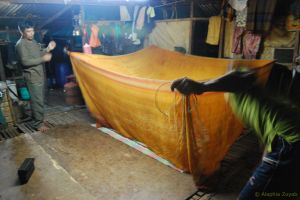
Putting up mosquito nets for the night. The mosquitoes on Trinket were vicious.
Patrick also left, saying “Don’t be scared if the house shakes at night. It’s just the pigs scratching themselves against the stilts.” He turned off the generator on his way out and now the only sound was of the waves touching the shore.
The tsunami had wiped the slate clean for the Nicobarese and Gopinath was one of the few people who had made a clear choice. If the government wasn’t going to allow him to go back to the way things were, he was going to do it himself. In that he had succeeded.
 I’ve been doing some activism in my kitchen lately — by launching a war on waste. After a few months of trying to waste as little as possible – my conclusion is that not wasting requires a pretty involved effort at first but now that I have developed a culture of not wasting, I can safely say that I’ve cut down kitchen waste by at least 60% …if not more. Woot!
I’ve been doing some activism in my kitchen lately — by launching a war on waste. After a few months of trying to waste as little as possible – my conclusion is that not wasting requires a pretty involved effort at first but now that I have developed a culture of not wasting, I can safely say that I’ve cut down kitchen waste by at least 60% …if not more. Woot! 


